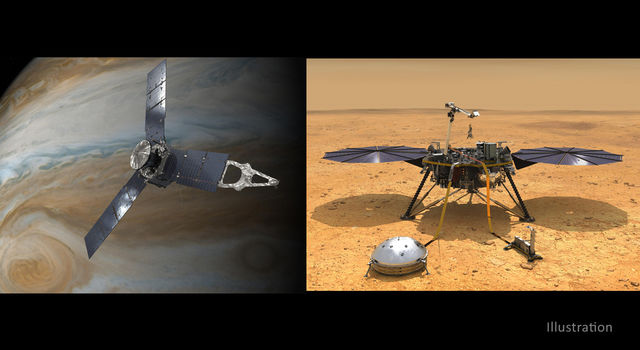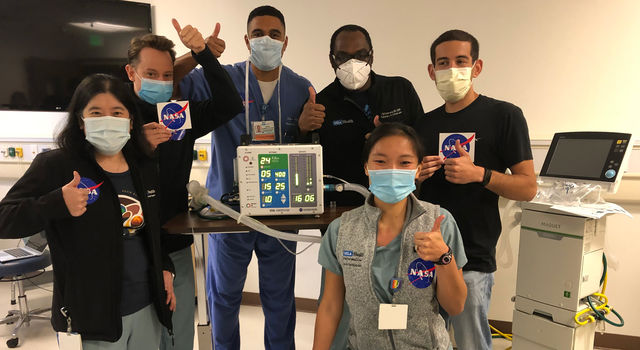Blogs | JPL | February 20, 2009
Counting Carbon
Imagine if you could scoop exactly one million molecules out of the air in front of you (while being careful not to grab any water vapor). Now, start sorting these molecules into different piles. Start with the two most common molecules and you've sorted 99 percent of your sample -- the nitrogen pile will have about 780,000 molecules, and oxygen pile will have about 210,000 molecules. Working on the third most common molecule, argon, gets you a new pile with about 9,000 molecules. Congratulations, you've sorted 99.9 percent of the molecules into just three piles. The remaining 1,000 molecules are called "trace gases." The most famous and the most common trace gas is carbon dioxide, or CO2. Out of the million you had at the beginning, you'll count about 385 CO2 molecules.
Now, imagine repeating this experiment 12 times per second while flying over Earth at more than 16,000 miles per hour. Each of those counts needs to be accurate enough to note the addition or subtraction of one molecule of CO2 per one million of air. This is the experiment that a group of scientists and engineers at NASA's Jet Propulsion Laboratory conceived almost 10 years ago. We call it the Orbiting Carbon Observatory, and it is now at the launch pad waiting for its ride into space.
The heart of the mission is a very accurate instrument -- called a "spectrometer" -- tuned to sense the presence of CO2. A spectrometer is a type of camera that splits incoming light into hundreds of different colors and then measures the amount of light in each of these colors. In the case of this mission, the spectrometer measures sunlight that has passed through the atmosphere twice: once on the way down to the surface, and then again on the way up to the orbiting spacecraft. When the light passes through air containing CO2, certain colors are absorbed. The spectrometer creates an image with dark bands where the sunlight is partially or completely missing. This image looks similar to a barcode. Encoded in that barcode is the information to infer how many CO2 molecules the sunlight encountered on its way to the spacecraft.
I joined the project in early 2001 as the lead engineer for the spectrometer. In the eight years that have followed, we've gone from an idea to a fully built and tested system sitting on top of a rocket, ready for launch. Along the way, a group of talented people has put in countless hours designing, building, and testing the system. When doing something for the first time, there are always issues that come up -- some of which look insurmountable at the time. It's been a challenge, but the hard work and creativity of our team saw us through all of them.
Now we are waiting for the payoff -- the first data from space. We've done everything we can to be ready. Now, launch awaits ...
TAGS:SOLAR SYSTEM, EARTH, CARBON, OCO, CO2







